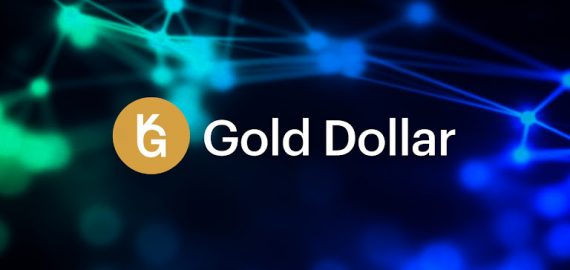DeFi’s Buyback Effect: DAOs Are Reinventing Token Economics For Sustainable Growth


In Brief
Leading DeFi protocols are adopting token buybacks and revamped tokenomics to create sustainable value, incentivize liquidity, and foster community-driven governance, signaling growing maturity in the ecosystem.

During the heady days of “DeFi Summer”, growth in the decentralized finance industry was dominated by “yield farming”, where protocols offered high-emission token incentives as a reward for liquidity providers. In essence, they were promising unsustainable yields to encourage users to fuel their growth by depositing yet more funds into them.
These models were arguably critical for helping DeFi protocols get off the ground and bootstrap liquidity, but they also promoted significant token inflation, diluting value for stakeholders. The focus on attracting and retaining liquidity at almost any cost generates little intrinsic value, and requires a constant stream of new capital that cannot be kept up forever.
Even the most ignorant economists recognise that such a model is ultimately unsustainable. So rather than wait for everything to come crashing down, some of the most dominant protocols have taken preemptive action, reinventing their tokenomics models to cement their longevity. Led by their communities through DAOs, projects such as dYdX, Lido and MakerDAO are looking to funnel their revenues back into token buyback programs, similar to publicly listed companies.
They’re taking their inspiration from traditional corporate finance. Many of the world’s biggest tech companies, like Apple, IBM and Nvidia, buy back shares on the open market in an effort to prop up the value of their stocks. It’s a tried and tested strategy that helps to reduce the number of outstanding shares on the market, increasing demand and boosting shareholder confidence, and now DAOs are trying to replicate this with their native tokens.
Who’s Driving DeFi Buybacks?
Protocols are engaging in token buybacks in an effort to sustain their long-term health and encourage further participation from DeFi investors. The idea is simple – use the revenue they generate from transaction fees to buy up tokens on the market and reduce the circulating supply. This means fewer tokens on the market and greater demand, bolstering the token’s price.
But this is not just about boosting the value of everyone’s stacks. Liquidity is the lifeblood of DeFi protocols, and so the higher the token’s price, the more incentives there are for liquidity providers to maintain their positions and deposit even more capital. In addition, it can also promote greater engagement in ecosystem governance. The theory being that as their investments grow, token holders will be more inclined to want to contribute by voting on proposals that help to decide the protocol’s fate. Such strategies ultimately aim to create a kind of virtuous cycle, where success leads to more engagement, which drives more innovation and creates yet more value.
The decentralized cryptocurrency exchange dYdX is leading the charge here. In May it became one of the very first DeFi protocols to adopt a token buyback program, and in the intervening months its DAO has repurchased millions of $DYDX tokens. It executes these buybacks in a transparent way, with the dYdX DAO allocating 25% of protocol fees to monthly buybacks. The tokens are then staked to boost the network’s security and generate additional revenue for the dYdX treasury.
The DAO is currently engaged in discussions about the possibility of eventually using 100% of its network fees to repurchase $DYDX in order to reduce the amount of tokens in circulation. Proponents argue that such a move would progressively enhance validator incentives, increasing the protocol’s appeal to the broader DeFi community.
dYdX’s model was partly influenced by MakerDAO’s “Surplus Buffer” mechanism, which was introduced a year earlier. This sees excess revenue from stability fees and other network operations redirected towards $MKR token buybacks. The tokens are promptly burned, creating deflationary pressure that helps to boost its price and reinforce economic stability.
Lido’s DAO has proposed something different. The proposal, which is currently up for vote, calls for the implementation of a system known as NEST, which will use $stETH tokens (staked Ethereum) to buy back $LDO tokens. If the proposal is accepted, Lido plans to start testing the system in December 2025, with the goal being to reduce the circulating supply of $LIDO and drive up demand.
A Sign Of Growing Maturity
These are all innovative examples of how DeFi DAOs are trying to adjust their tokenomics models to better align incentives for every stakeholder. The goal is to create an economic feedback loop that incorporates elements such as treasury diversification and staking yields.
The enhanced token value equates to more attractive staking yields, which encourages more people to invest in the ecosystem. At the same time, the buybacks help to make token values more resilient, so they can weather periods of increased market volatility and prevent investors from panic selling.
These new tokenomics models represent a profound shift in the DeFi market, indicating the growing maturity of protocols as they seek to establish themselves as sustainable, value-generating entities. When DeFi communities see that a protocol is investing in its long-term future, they become more inclined to participate, fostering a greater sense of collective ownership and shared destiny. Participants will feel as if they’re all in it together, and strive to ensure the community’s long-term success.
Getting The Balance Right
The main challenge for any DAO is to strike the right balance between efficiency and democracy. They need to ensure that all actions taken truly reflect the will of the protocol’s users, but at the same time, they must also make sure that decisions can be taken quickly enough to accelerate innovation and stay ahead of the game.
This requires DAOs to carefully consider what kind of voting mechanism is employed. The weight of each token holder’s vote must be balanced in order to prevent so-called whales from gaining too much influence over the decision-making process. In the case of dYdX, the weight of each person’s vote is based on the amount of $DYDX tokens they have staked, which ensures that anyone heavily invested in its ecosystem will avoid voting on proposals that could have a detrimental effect.
One of the most durable models can be found in Compound’s DAO, which relies on a system of on-chain proposals. With this, $COMP token holders are entitled to submit, debate and then vote on the protocol’s operational parameters, such as how, when and where to buyback tokens and how to manage its treasury effectively. The model ensures that everyone gets to participate in the decision-making process and that outcomes reflect their democratic will.
Arbitrum has taken a slightly different approach with its Grants model, which aims to facilitate decentralized capital allocation. It has not yet instituted buybacks, but its community has become very active in voting on how the treasury distributes its funds to different projects and development initiatives. Because every $ARB token holder is invested in the project’s success, it encourages them to consider the implications of each proposal very carefully and ensure the benefits outweigh any risks the changes may introduce.
The Promise Of Broader Participation
The rise of DeFi buybacks is just the start, and we can expect DeFi protocols to embrace further innovations in community-led treasury management in future. Already, we see multiple DAOs engaged in discussions around advanced yield strategies for treasury assets and more sophisticated risk management frameworks. Some are even holding talks with other DAOs about cross-protocol capital coordination plans.
While DAOs have taken their lead from traditional finance, the unique way in which they enable broad community participation gives them the potential to out-innovate their corporate cousins in the longer term, paving the way for DeFi to develop more sophisticated ecosystems and increase value for all stakeholders.
Disclaimer
In line with the Trust Project guidelines, please note that the information provided on this page is not intended to be and should not be interpreted as legal, tax, investment, financial, or any other form of advice. It is important to only invest what you can afford to lose and to seek independent financial advice if you have any doubts. For further information, we suggest referring to the terms and conditions as well as the help and support pages provided by the issuer or advertiser. MetaversePost is committed to accurate, unbiased reporting, but market conditions are subject to change without notice.
About The Author
Alisa, a dedicated journalist at the MPost, specializes in cryptocurrency, zero-knowledge proofs, investments, and the expansive realm of Web3. With a keen eye for emerging trends and technologies, she delivers comprehensive coverage to inform and engage readers in the ever-evolving landscape of digital finance.
More articles

Alisa, a dedicated journalist at the MPost, specializes in cryptocurrency, zero-knowledge proofs, investments, and the expansive realm of Web3. With a keen eye for emerging trends and technologies, she delivers comprehensive coverage to inform and engage readers in the ever-evolving landscape of digital finance.


















































